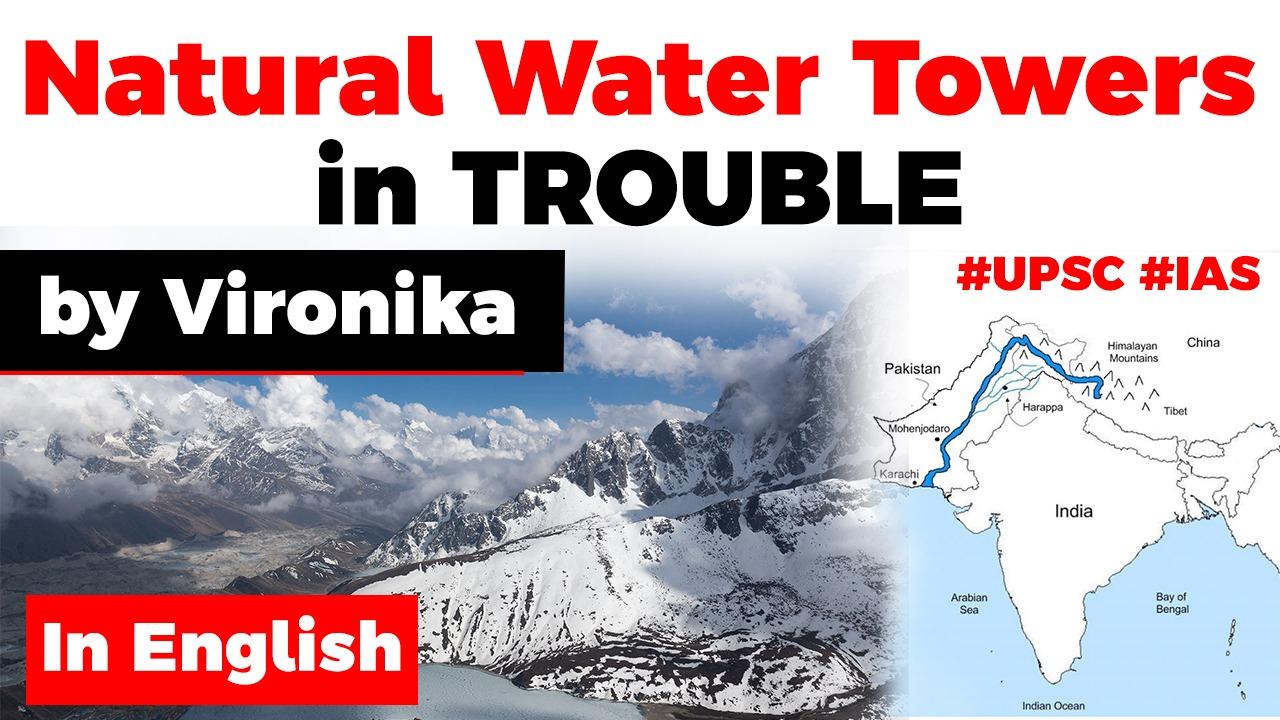Table of Contents
- The Indus River and its tributaries, which flow through parts of China, India, Afghanistan and Pakistan, are among the most vulnerable ‘water towers’ in the world.

- Mountains provide lowlands with essential freshwater for irrigation and food production, for industrial use, and for the domestic needs of rapidly growing urban populations.
- Hence they are often referred to as natural “water towers”.
- Asia: Indus, Tarim, Amu Darya, Syr Darya, Ganges-Brahmaputra
- Europe: Rhône, Po, Rhine, Black Sea North Coast, Caspian Sea Coast
- North America: Fraser, Columbia and Northwest United States, Pacific and Arctic Coast, Saskatchewan-Nelson, North America-Colorado
- South America: South Chile, South Argentina, Negro, La Puna region, North Chile
Indus basin
- Its waters, produced at high elevation from rain and snow, and draining from lakes and glaciers, support more than 200 million people settled across parts of Afghanistan, China, India and Pakistan.


Drainage System
- The Indian drainage system consists of a large number of small and big rivers.
- It is an outcome of:
- The evolutionary process of the three major physiographic units
- The nature and characteristics of precipitation.

- On the basis of discharge of water (orientations to the sea), the drainage system of India may be grouped into:
- the Arabian Sea drainage
- the Bay of Bengal drainage

- Rivers of the inland drainage basin (endorheic basin)
- The Ghaggar river in Haryana
- The Luni river in Rajasthan
- The Aksai Chin region in Ladakh too has some inland drainage.
- Major river basins
- Medium river basins
- Minor river basins
- The Himalayan drainage, and
- The Peninsular drainage.
The Himalayan Drainage system
- It consists of the rivers originating in the Himalayan and trans-Himalayan region. It further consists of three river systems namely:
- the Ganga,
- the Indus, and
- the Brahmaputra river systems.
Not many lessons learnt from water planning failures
- The Central government launched the Jal Shakti Abhiyan (JSA), a time-bound, mission mode water conservation campaign to be carried out in two phases, across the 255 districts having critical and overexploited groundwater levels.
- Jal Shakti Abhiyan
- Planning scientifically
- Current Status & Limitations of data
Latest Burning Issues | Free PDF






















 WhatsApp
WhatsApp